| Rus | Eng |
 The Prize is awarded to researchers, scientists and developers (up to three people) being the authors of scientific-technological discovery or discoveries in the field of nanotechnologies, and to the company being the first to apply the discovery (discoveries) to mass production with the annual turnover of at least $10 million and reached business success through the application of the discovery (discoveries).
The Prize is awarded to researchers, scientists and developers (up to three people) being the authors of scientific-technological discovery or discoveries in the field of nanotechnologies, and to the company being the first to apply the discovery (discoveries) to mass production with the annual turnover of at least $10 million and reached business success through the application of the discovery (discoveries).
 The RUSNANOPRIZE International Nanotechnology Prize Committee awarded the winners of the 2013 prize, in the field of nanomaterials and surface modification. This year prize goes to Massachusetts Institute of Technology Institute Professor Robert Langer and Harvard Medical School Professor Omid Farokhzad for the development and industrialization of nanoparticle technologies for medical applications.
The RUSNANOPRIZE International Nanotechnology Prize Committee awarded the winners of the 2013 prize, in the field of nanomaterials and surface modification. This year prize goes to Massachusetts Institute of Technology Institute Professor Robert Langer and Harvard Medical School Professor Omid Farokhzad for the development and industrialization of nanoparticle technologies for medical applications.
Prof. Langer and Prof. Farokhzad have created combined nanoparticles, the surfaces of which are covered with biological ligands, i.e. molecules that recognize specific targets in the body, for example, the surface of cancer cells. The interior of the nanoparticles is composed of biologically inert polymer which binds the active substance, for example docetaxel, which is traditionally used in chemotherapy. These particles may circulate for a long time and be retained in the blood, and so they accumulate only around the tumor cells. Based on this technology, in particular, drugs have been created for the treatment of brain tumors, which are difficult to treat with traditional methods.
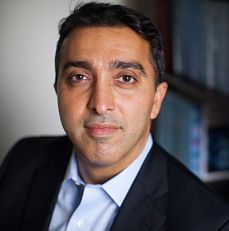 The winning research is a junction between biotechnology and material science. Prof. Langer’s research has laid foundation for new developments in the field of biomaterials as well as for applying nanomaterials in medicine and biology. Aside from his research in bio-compatible polymers for drug delivery systems with controlled release and synthetic polymers for tissue engineering, Prof. Langer has pioneered creating many other new types of biomaterials, like shape-memory polymers and materials with controlled surface properties.
The winning research is a junction between biotechnology and material science. Prof. Langer’s research has laid foundation for new developments in the field of biomaterials as well as for applying nanomaterials in medicine and biology. Aside from his research in bio-compatible polymers for drug delivery systems with controlled release and synthetic polymers for tissue engineering, Prof. Langer has pioneered creating many other new types of biomaterials, like shape-memory polymers and materials with controlled surface properties.
RUSNANOPRIZE 2013 award was also given to US-based BIND Therapeutics Inc. for the successful commercial application of Prof. Langer’s and Prof. Farokhzad’s research, developing Accurins™ a new class of highly selective targeted and programmable therapeutics.
RUSNANOPRIZE is established to promote Science and Business Integration, Public Awareness of the Achievements in the Nanotechnology Area, International Cooperation, Acknowledgement of the Role of Scientists and Manufacturers.
International RUSNANOPRIZE 2013 Award Committee is represented by famous scientists and innovation businessman, who are generally acknowledged to have achieved outstanding results in the field of this year Prize - nanomaterials and surface modification. This year prof. Yury Gogotsi, Director of the A. J. Drexel Nanotechnology Institute, distinguished chair and professor, Drexel University (USA), also was invited to International Prize Award Committee
Financial rewards, prize symbols and honorary diploma of the Prize are awarded to inventors, scientists and developers, the authors of the R&D projects or technologies implemented into production. The company that has achieved some significant commercial success due to the implementation of these technologies is awarded with an honorary diploma and a glass ball, which is a RUSNANOPRIZE symbol.
The RUSNANOPRIZE 2013 award ceremony was held on November 1 in Moscow as part of the Open Innovations Forum.
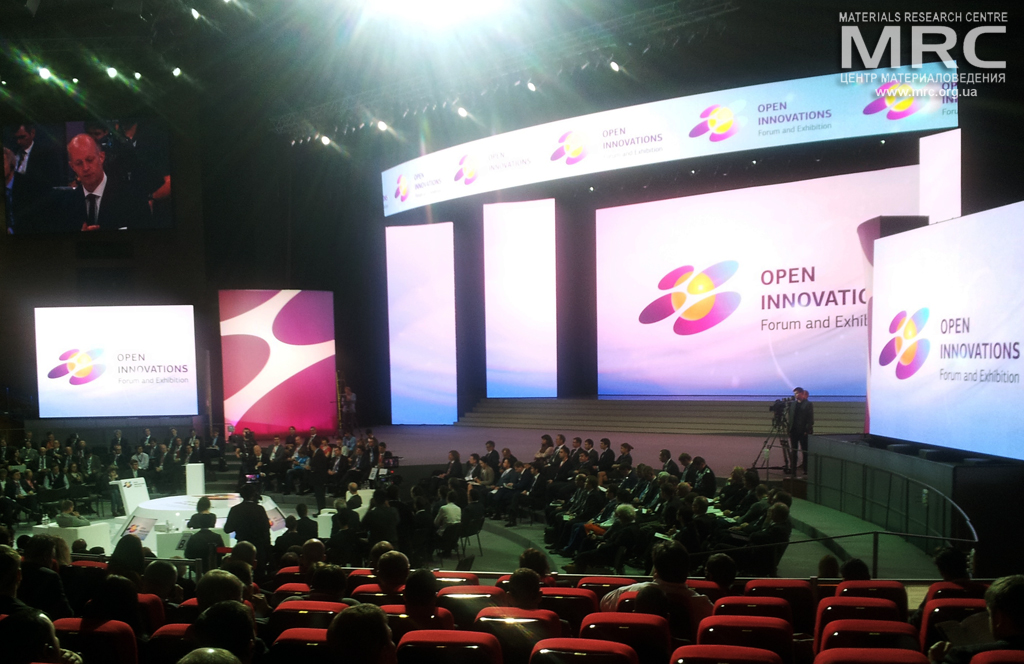
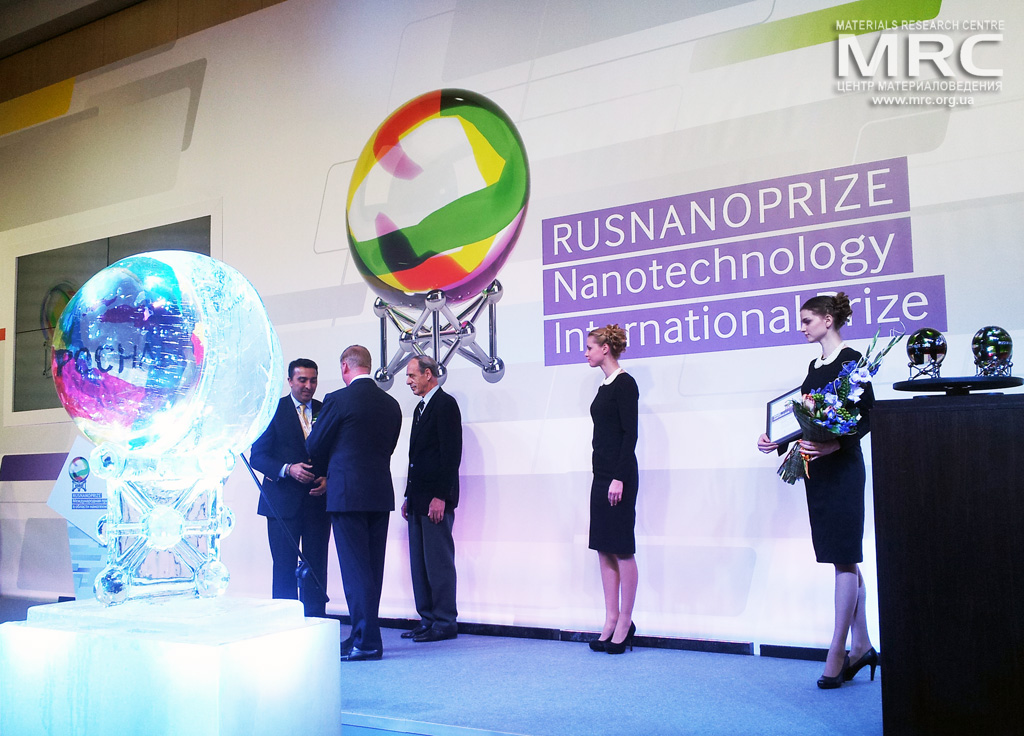
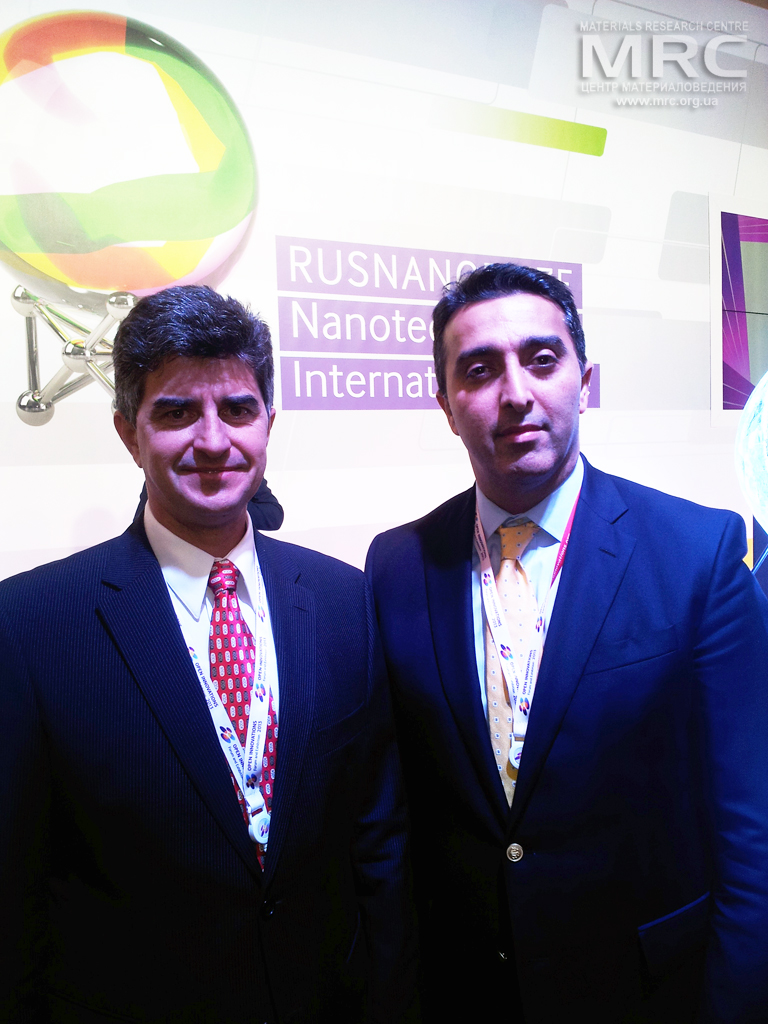
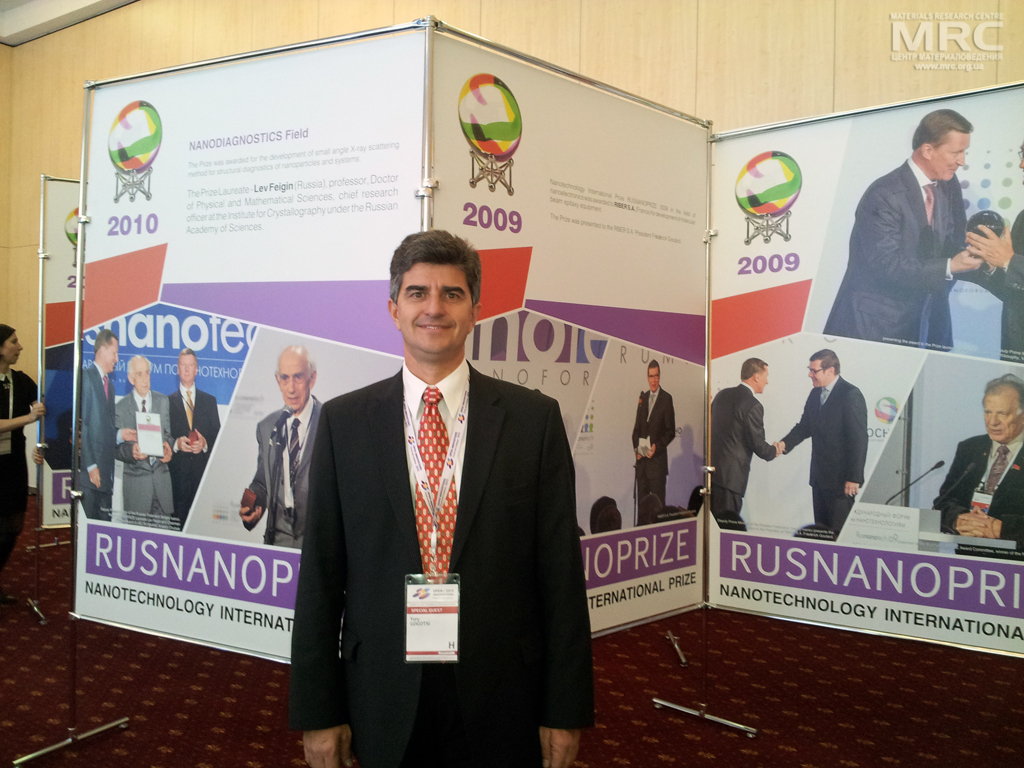
Source: www.rusnanoprize.ru



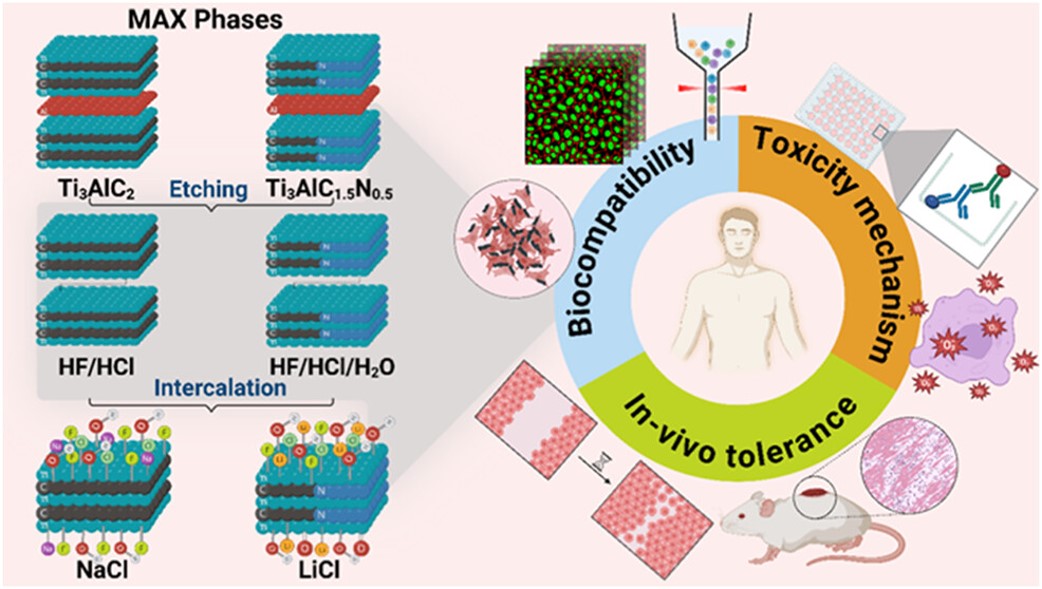 MXenes potential applications include sensors, wound healing materials, and drug delivery systems. A recent study explored how different synthesis methods affect the safety and performance of MXenes. By comparing etching conditions and intercalation strategies, researchers discovered that fine-tuning the surface chemistry of MXenes plays a crucial role in improving biocompatibility. These results provide practical guidelines for developing safer MXenes and bring the field one step closer to real biomedical applications.
MXenes potential applications include sensors, wound healing materials, and drug delivery systems. A recent study explored how different synthesis methods affect the safety and performance of MXenes. By comparing etching conditions and intercalation strategies, researchers discovered that fine-tuning the surface chemistry of MXenes plays a crucial role in improving biocompatibility. These results provide practical guidelines for developing safer MXenes and bring the field one step closer to real biomedical applications.
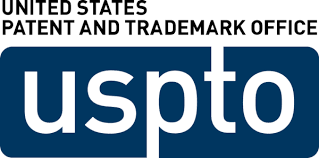 Exellent news, our joint patent application with Drexel University on highly porous MAX phase precursor for MXene synthesis published. Congratulations and thanks to all team involved!
Exellent news, our joint patent application with Drexel University on highly porous MAX phase precursor for MXene synthesis published. Congratulations and thanks to all team involved! Last Call! Have you submitted your abstract for IEEE NAP-2025 yet? Join us at the International Symposium on "The MXene Frontier: Transformative Nanomaterials Shaping the Future" – the largest MXene-focused conference in Europe this year! Final Submission Deadline: May 15, 2025. Don’t miss this exclusive opportunity to showcase your research and engage with world leaders in the MXene field!
Last Call! Have you submitted your abstract for IEEE NAP-2025 yet? Join us at the International Symposium on "The MXene Frontier: Transformative Nanomaterials Shaping the Future" – the largest MXene-focused conference in Europe this year! Final Submission Deadline: May 15, 2025. Don’t miss this exclusive opportunity to showcase your research and engage with world leaders in the MXene field!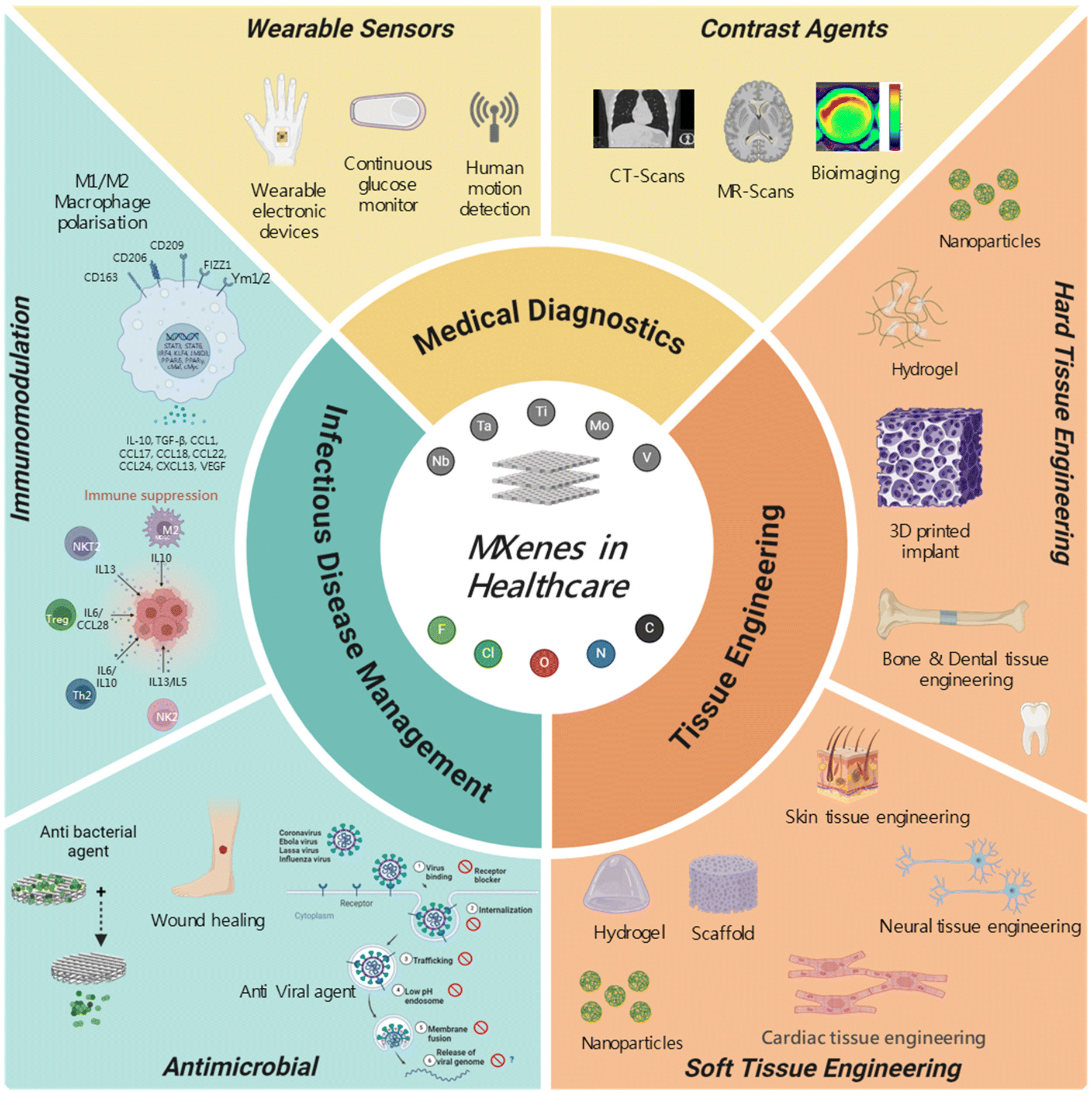 We are excited to announce the publication of latest review article on MXenes in Healthcare. This comprehensive review explores the groundbreaking role of MXenes—an emerging class of 2D materials—in revolutionizing the fields of medical diagnostics and therapeutics. Read the full article here: https://doi.org/10.1039/D4NR04853A.
We are excited to announce the publication of latest review article on MXenes in Healthcare. This comprehensive review explores the groundbreaking role of MXenes—an emerging class of 2D materials—in revolutionizing the fields of medical diagnostics and therapeutics. Read the full article here: https://doi.org/10.1039/D4NR04853A.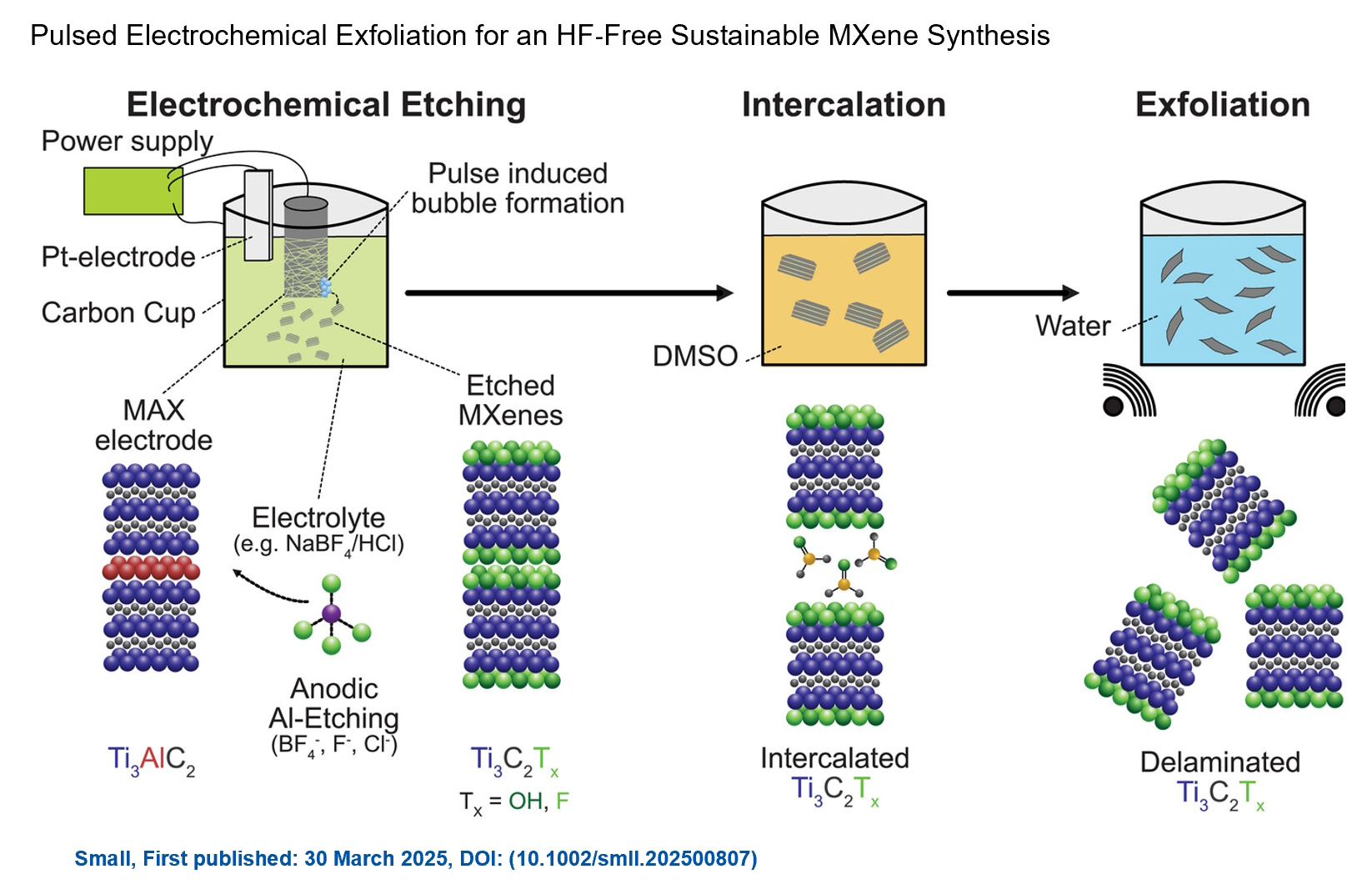 Congratulations and thank you to our collaborators from TU Wien and CEST for very interesting work and making it published! In this work, an upscalable electrochemical MXene synthesis is presented. Yields of up to 60% electrochemical MXene (EC-MXene) with no byproducts from a single exfoliation cycle are achieved.
Congratulations and thank you to our collaborators from TU Wien and CEST for very interesting work and making it published! In this work, an upscalable electrochemical MXene synthesis is presented. Yields of up to 60% electrochemical MXene (EC-MXene) with no byproducts from a single exfoliation cycle are achieved. Congratulations to all collaborators with this interesting joint work!
Congratulations to all collaborators with this interesting joint work!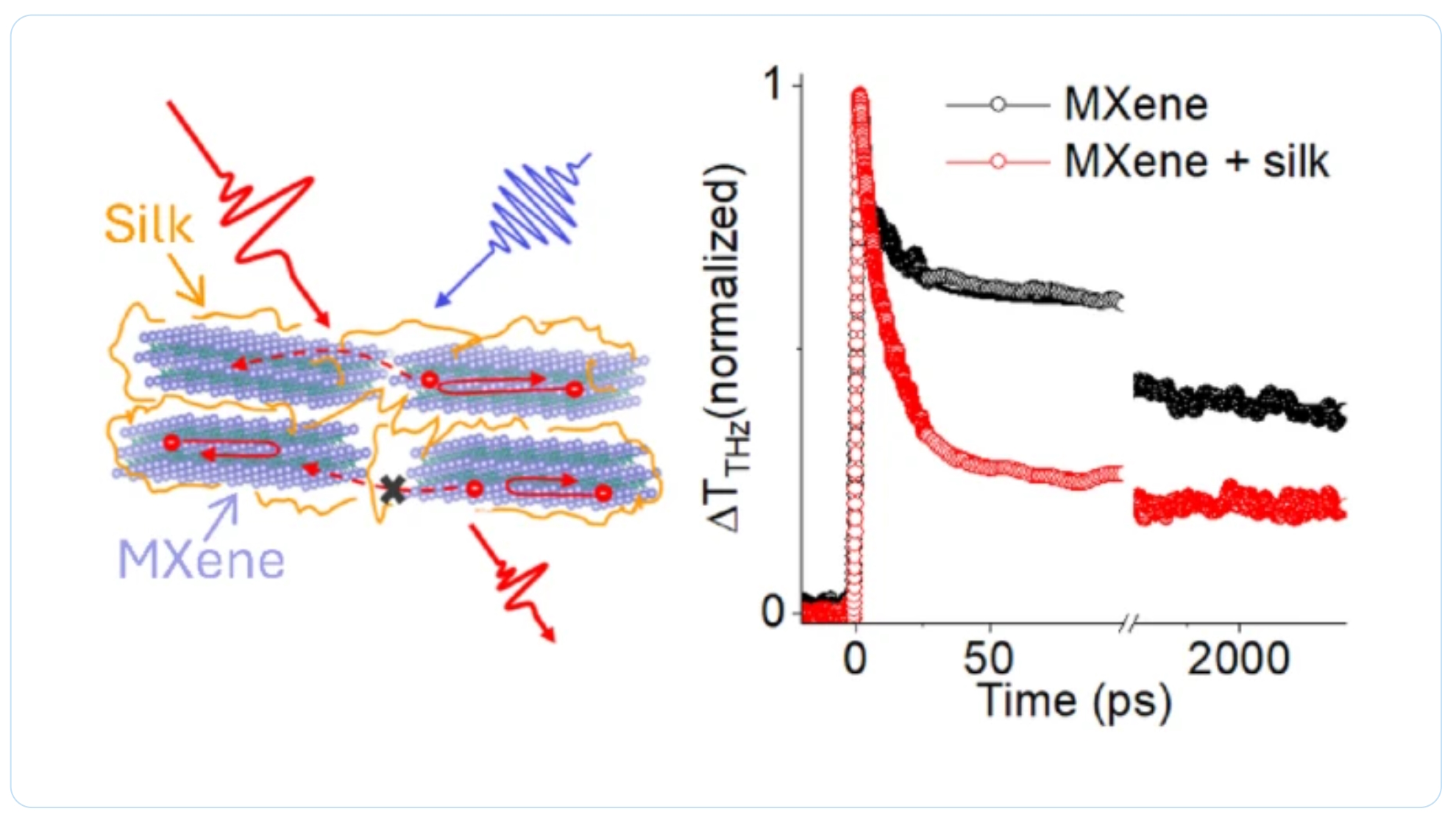 Thank you to our collaborators for the amazing joint work recently published in Graphene and 2D Nanomaterials about MXene–silk fibroin composite films aiming to develop materials with tunable electronic and thermal properties
Thank you to our collaborators for the amazing joint work recently published in Graphene and 2D Nanomaterials about MXene–silk fibroin composite films aiming to develop materials with tunable electronic and thermal properties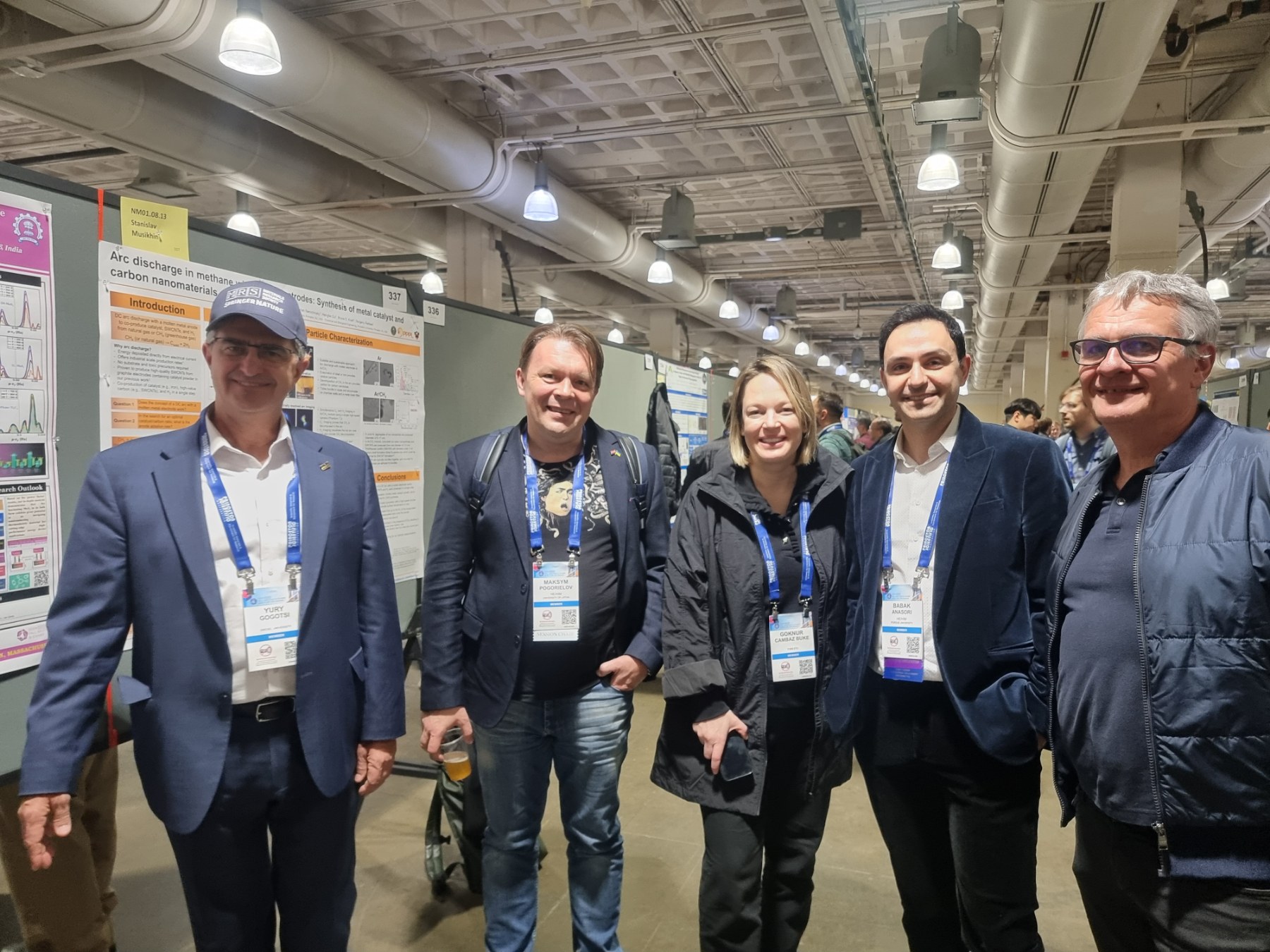 Dr. Oleksiy Gogotsi, director of MRC and Carbon-Ukraine, innovative companies that are among the leaders on the world MXene market, visited 2024 MRS Fall Meeting & Exhibit. together with Dr. Maksym Pogorielov, Head of Advanced Biomaterials and Biophysics Laboratory, University of Latvia.
Dr. Oleksiy Gogotsi, director of MRC and Carbon-Ukraine, innovative companies that are among the leaders on the world MXene market, visited 2024 MRS Fall Meeting & Exhibit. together with Dr. Maksym Pogorielov, Head of Advanced Biomaterials and Biophysics Laboratory, University of Latvia.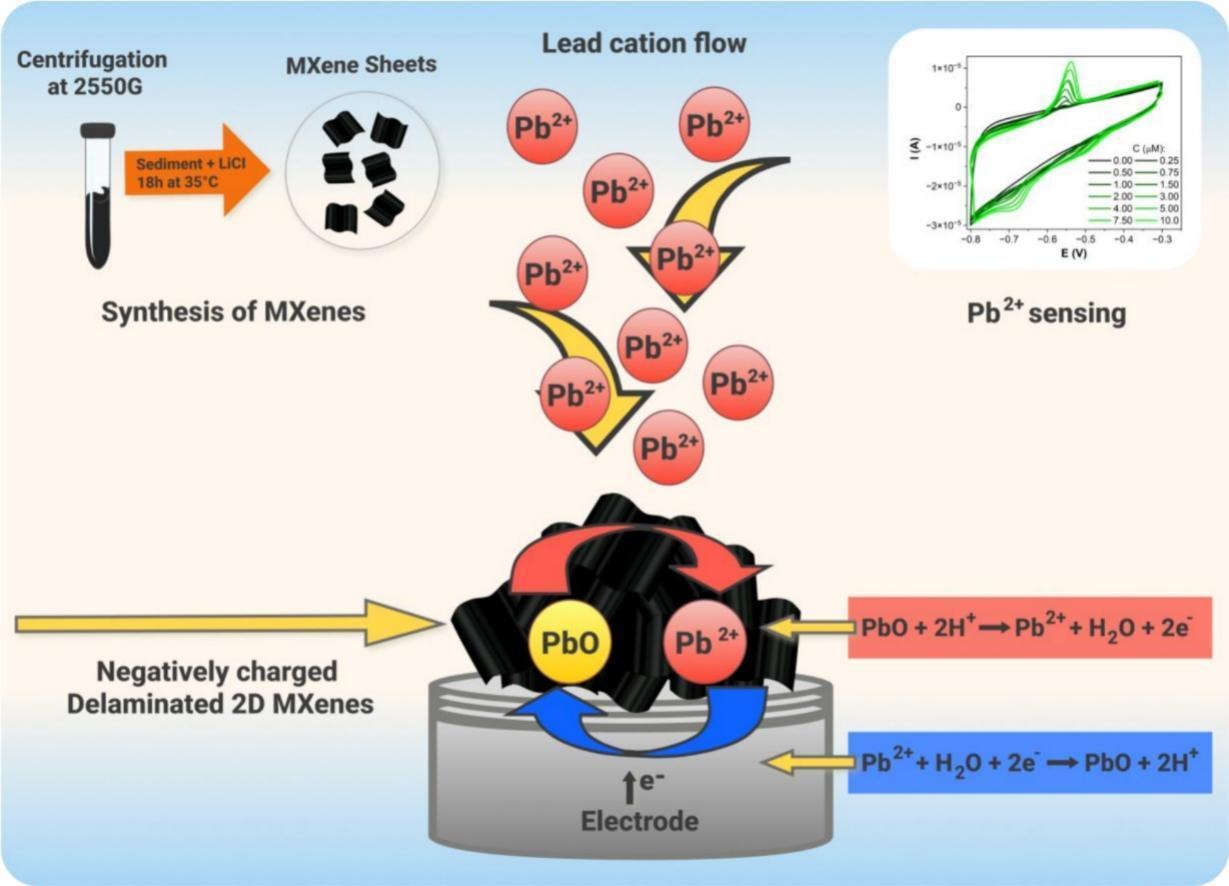
 MRC and Carbon-Ukraine team visited the 3rd International MXene conference held at Drexel University on August 5-8, 2024. Conference brought together the best reserchers and leading experts on MXene field.
MRC and Carbon-Ukraine team visited the 3rd International MXene conference held at Drexel University on August 5-8, 2024. Conference brought together the best reserchers and leading experts on MXene field. 
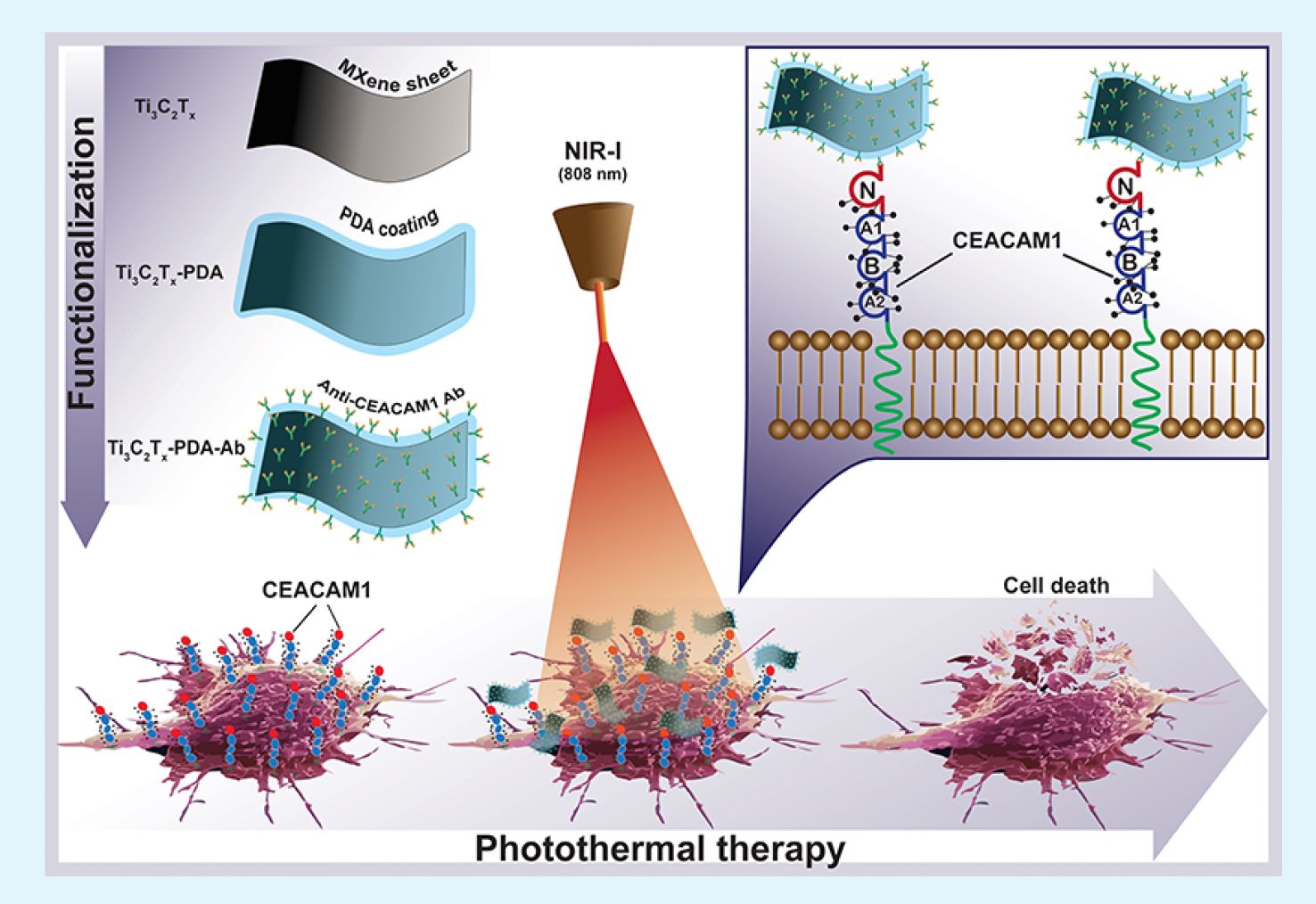 Together with colleagues from the University of Latvia, MRC/Carbone Ukraine, Adam Mickiewicz University, University Clinic Essen, and others, we have developed a novel concept involving the binding of antibodies to MXenes. In our research, we utilized anti-CEACAM1 antibodies to develop targeted photo-thermal therapy for melanoma (in vitro), paving the way for future in vivo studies and clinical trials. For the first time, we demonstrate the feasibility of delivering MXenes specifically targeted to melanoma cells, enabling the effective ablation of cancer cells under near-infrared (NIR) light. This new technique opens up vast potential for the application of MXenes in cancer treatment, diagnostics, drug delivery, and many other medical purposes.
Together with colleagues from the University of Latvia, MRC/Carbone Ukraine, Adam Mickiewicz University, University Clinic Essen, and others, we have developed a novel concept involving the binding of antibodies to MXenes. In our research, we utilized anti-CEACAM1 antibodies to develop targeted photo-thermal therapy for melanoma (in vitro), paving the way for future in vivo studies and clinical trials. For the first time, we demonstrate the feasibility of delivering MXenes specifically targeted to melanoma cells, enabling the effective ablation of cancer cells under near-infrared (NIR) light. This new technique opens up vast potential for the application of MXenes in cancer treatment, diagnostics, drug delivery, and many other medical purposes.
